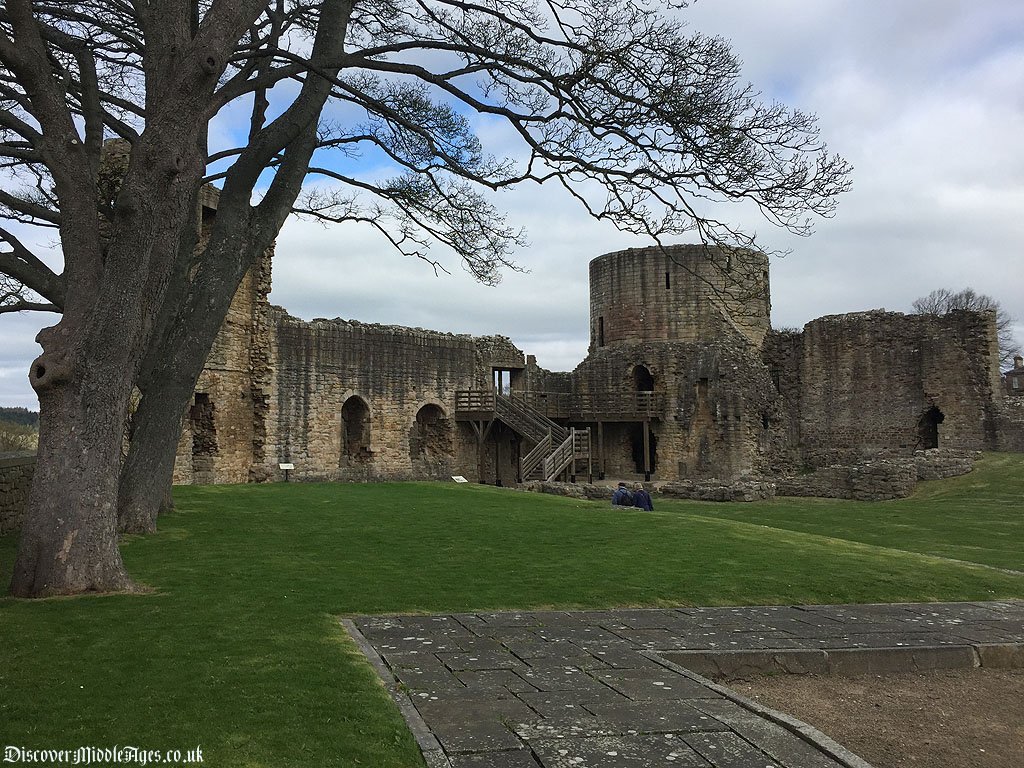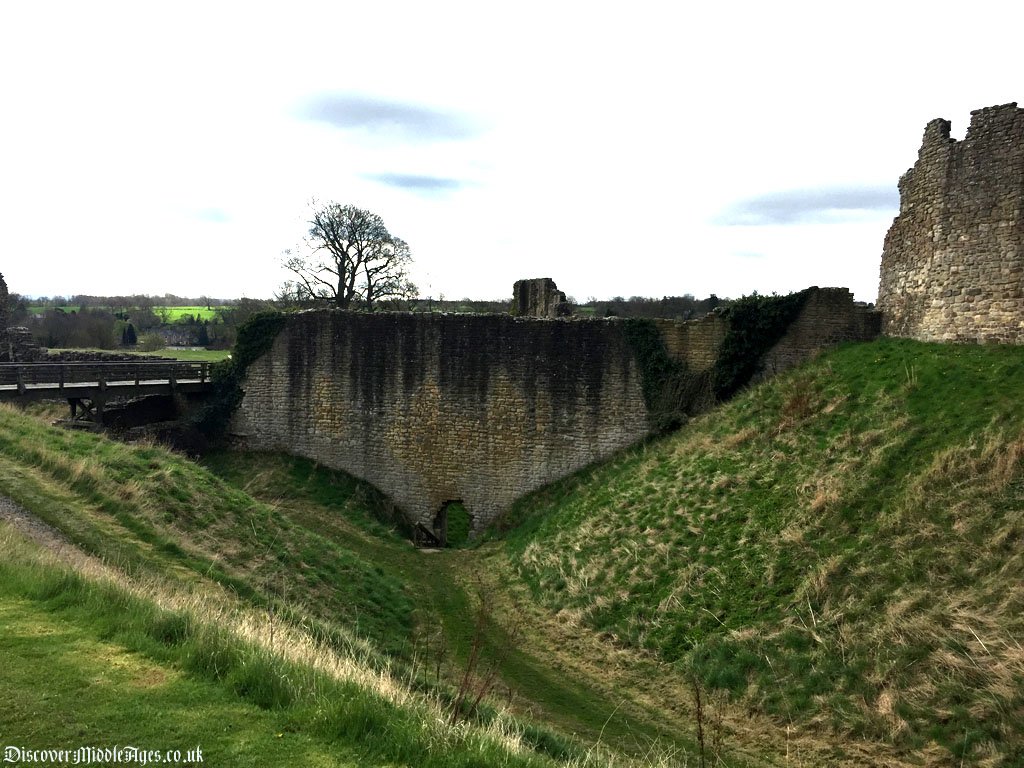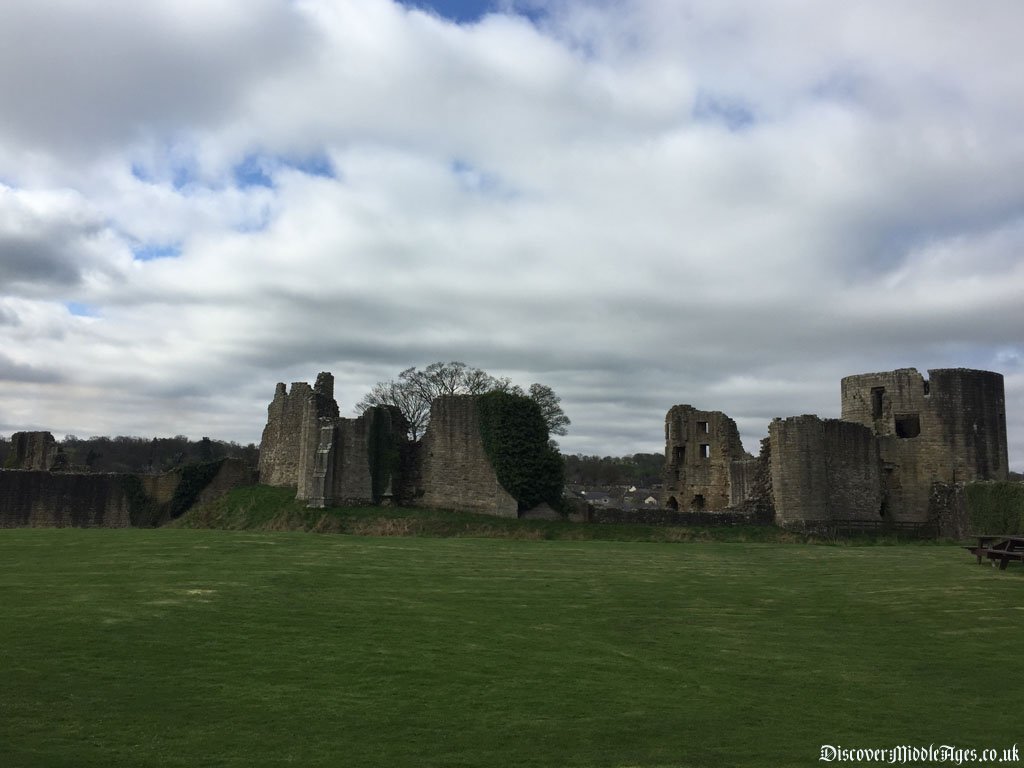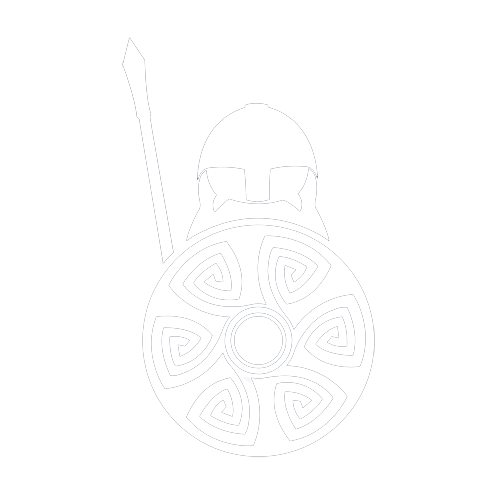Barnard Castle A Favourite of Richard III
Barnard Castle sits high above the River Tees in Northumbria. The location is perfectly situated with steep cliffs either side. The River Tees flows to the west, and there used to be a Roman road leading to a ford in the river to the north. It was these important factors that led Guy de Baliol, an Anglo-Picard baron of King William II, to build Barnard Castle in timber around 1095.
The castle remained in the Baliol family for over 200 years. Eventually it was lost to the Beauchamp family in the 13th century, and to the Crown and King Richard III after that. From then on, Barnard Castle was rather neglected and became the ruin you see today.
Barnard Castle and the Anglo-Picard Baliol Family
In the 9th century, the land and estate which Barnard Castle lies, was owned by the church. During the rebellious years of King William II, the land was seized by the Earl of Northumbria. Robert de Mowbray, the Earl of Northumbria was a very powerful northern baron, who had previously allied with William's brother Robert in a failed rebellion.
The Earl jointly led a second rebellion against William, attempting to transfer the English crown to William's cousin Stephen of Aumale. However, this ultimately led to the Earl's downfall, and he was imprisoned in Windsor Castle for life, forfeiting his vast estates. The king granted the Lordship of Gainford to his loyal Anglo-Picard supporter, Guy de Baliol. This angered the Church however, as the land was still seen to be theirs by right.
Barnard Castle and it's lands were later passed down to Guy's nephew, Bernard de Baliol, who inherited it in 1125. Bernard, along with his younger son, Bernard II, rebuilt the castle in stone and expanded the earthworks.
Bernard also founded the town outside the walls, which is when Bernard's name became the name of the castle and the town. The town flourished through generations of the Baliol family, establishing a market at the town's market cross, pastures and hunting parkland.
Bernard II held the castle and estates until his death in 1190, but without an heir, everything was passed to his cousin, Eustace de Helicourt. Eustace changed his surname to Baliol to maintain the family legacy.
Scottish Siege of Barnard Castle
In 1215 Barnard Castle was now owned by Hugh de Baliol, son of Eustace. Hugh was a close ally of King John, and helped defend the North against the rebellious Northumbrian barons, who were supported by the Scottish king, Alexander II. In July 1215, after King John had returned south, Alexander II lay siege to Barnard Castle. It is said that a cross bow fired from the castle walls, struck Alexander's brother-in-law on the his helmet with such force, he fell to the ground and died immediately. The siege ultimately failed.
John de Balliol succeeded his father Hugh in 1228, and became one of the most successful Baliol's to date. John married Devorguilla of Galloway, daughter of Alan of Galloway, gaining titles and vast lands in Scotland. Loyal to King Henry III, John fought in the Battle of Lewes in 1264 against rebelling barons, led by Simon de Montfort. John was captured, and Barnard Castle was held by the barons in exchange for peace.





Barnard Castle and the Beauchamp Family
By 1278, John had died and his youngest son, John de Baliol II succeeded him. Through titles left by his father, John was a possible claimant to the Scottish throne. King Edward I and his council decided to choose John to be king of Scotland, and John pledged his allegiance. However, in 1296 soon after his coronation, John rejected Edward's authority and war broke out. King Edward I marched north, and John quickly surrendered, and was imprisoned in the Tower of London. His vast estates were taken away, and the Church once again made claim to the lands and Barnard Castle.
In 1307, Edward I granted Guy de Beauchamp, Earl of Warwick, Barnard Castle with its estate. By this time, the castle was deteriorating fast, and the outer wards were abandoned, reducing the size and cost of the castle. Guy did make improvements to the Inner and Middle Wards, as the threat of Scottish invasion was never far away. The Scottish victory at the Battle of Bannockburn in 1314 put Barnard Castle on high alert.
During the following 3 generations of Beauchamps, from Guy to Thomas to Thomas II to Richard, Barnard Castle had very little money spent on it. Thomas and Richard were both infants when they inherited the estate, which was held by the Crown until they came of age. In 1440, Bishop Nevill attempted to sieze the castle, but King Henry VI stepped in and returned the castle to Richard.
Barnard Castle Passes to Richard, Duke of Gloucester
By 1449, Barnard Castle was passed yet again to an infant Beauchamp, Henry, who died when coming of age. So the castle was passed to his sister Anne, 16th Countess of Warwick. Anne married Richard Nevill, 16th Earl of Warwick. Richard Nevill would later be known as Warwick the Kingmaker, during the War of the Roses.
The Church once again tried to take back the castle and estate, upon the death of Warwick at the Battle of Barnet, in 1471. However, the estate was handed down to Anne's son-in-law Richard, Duke of Gloucester (despite Anne's own valid claim).
In 1483, Richard became King Richard III, and began making great plans for Barnard Castle. However, the plans were never realised as Richard died 2 years later at Bosworth Field in 1485.
Anne's claim was restored, but she granted them to king Henry VII on one condition. They were to be passed to Anne's successors, upon her death. This condition was never met, and Barnard Castle remained under the Crown until 1603, causing further deterioration to the castle.
Richard's Additions to Barnard Castle
In the Great Chamber of Barnard Castle, the oriel window overlooking the river could have been added by Richard. Above the window, on the top part of the frame is a carving of a boar, which was Richard's emblem.
Barnard Castle Witnesses the Rising of the North
During the 16th century, the English reformation provoked anger and rebellions across the country. The new Protestant religion was not widely accepted, especially among northern estates and Scotland. In 1569, rebels were planning to depose Queen Elizabeth I and replace her with their Catholic queen, Mary Queen of Scots. This would restore the Catholic faith, in their eyes.
Barnard Castle became involved in the rebellion, as the uprising spread across Northumberland. Sir George Bowes, a protestant and servant of the crown, heard of the rebellion and garrisoned Barnard Castle. In December 1569, 5000 rebels surrounded the castle's walls.
The rebels began attacking the Outer Ward walls, and breaches began to appear. The garrison retreated to the Inner Ward, but water supplies were running low. Moral was falling among the garrisoned troops, and some clambered over the walls to join the attacking force. With his men deserting and the water supplies gone, Sir George Bowes surrendered to the rebels. He was allowed to march out of the castle with 400 of this loyal troops, but Barnard Castle was lost.
Help did arrive soon after, from the Earl of Sussex. The rebellion was swiftly crushed and Barnard Castle was leased back to George Bowes, with the Crown holding onto the estate.
Barnard Castle the Ruin
Through the 17th century, Barnard Castle was leased and resold to the Earl of Somerset, then to the City of London, and then to Sir Henry Vane. Nearby Raby Castle was already owned by Sir Henry, and Barnard Castle's stone was used as building material to expand Raby. The Town and Middle Wards were used as meadows, and by the early 18th century, Barnard Castle was a mere shell.
Since then, work has been done over the years to excavate the ruin, and reveal foundations and earthworks. Today, Barnard Castle is maintained by English Heritage.
Egglestone Abbey
A few miles south of Barnard Castle, down the River Tees, sits Egglestone Abbey. It was founded in 1195 by Premonstratensian canons, and the site was chosen for its position on the river and its isolation. The Abbey housed a minimum of twelve canons, but it struggled with poverty. To help, the Abbey was allowed to appropriate a number of local churches, which brought in much needed revenue.
However, the revenue was still the lowest of any Abbey in the country. Henry VIII's suppression of monasteries Act required that monasteries of annual values less than £200 should be suppressed. Egglestone was far short of this sum, and in 1540 the Abbey was closed. A great ruin now stands where the Abbey once did, despite spending a period of its time as a personal residence.
Visiting Barnard Castle
Barnard Castle is run and managed by English Heritage. For details on opening times, facilities and refreshments please visit: https://www.english-heritage.org.uk/visit/places/barnard-castle/
Address: Barnard Castle, Scar Top, Barnard Castle, Durham, DL12 8PR





